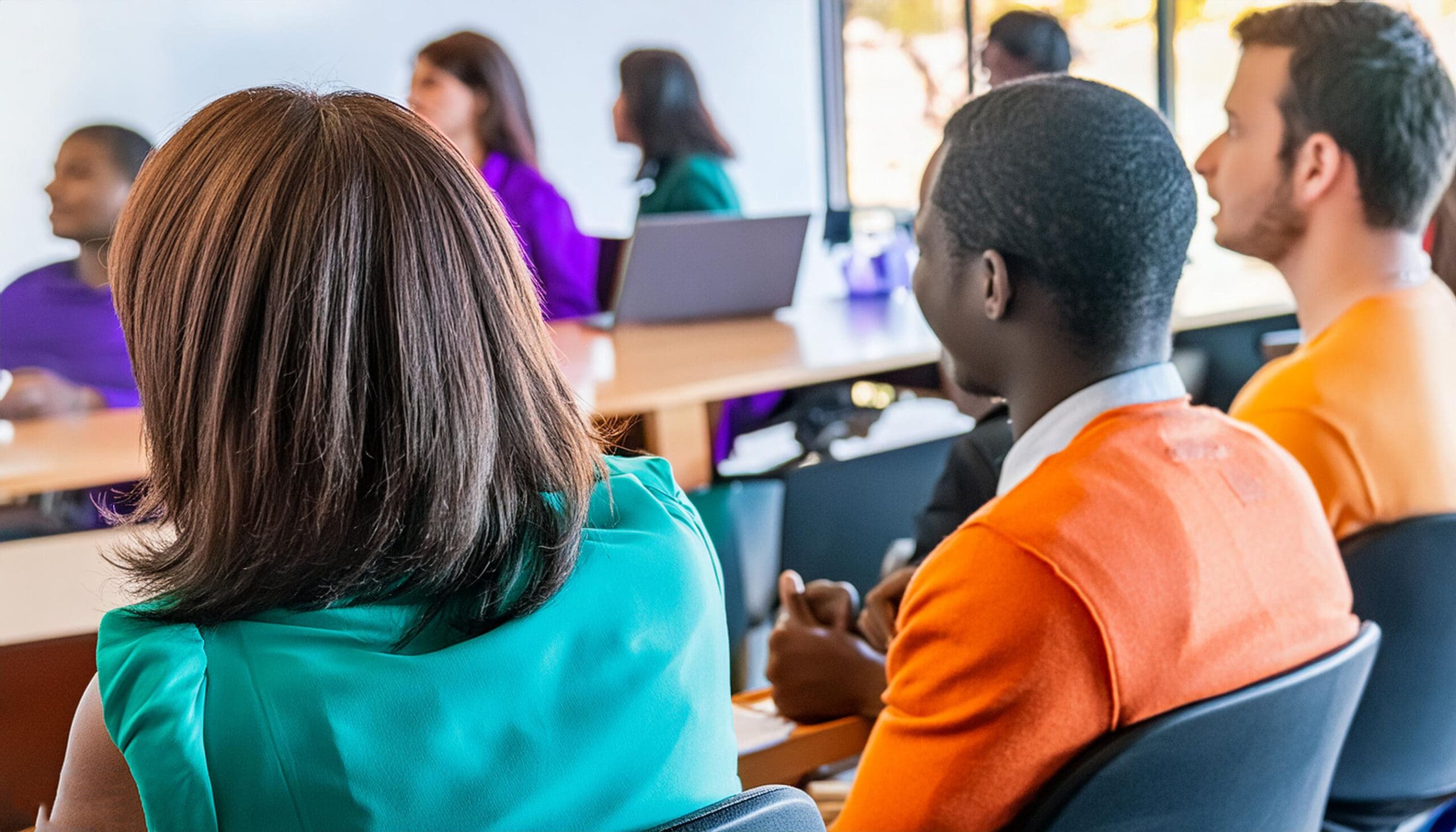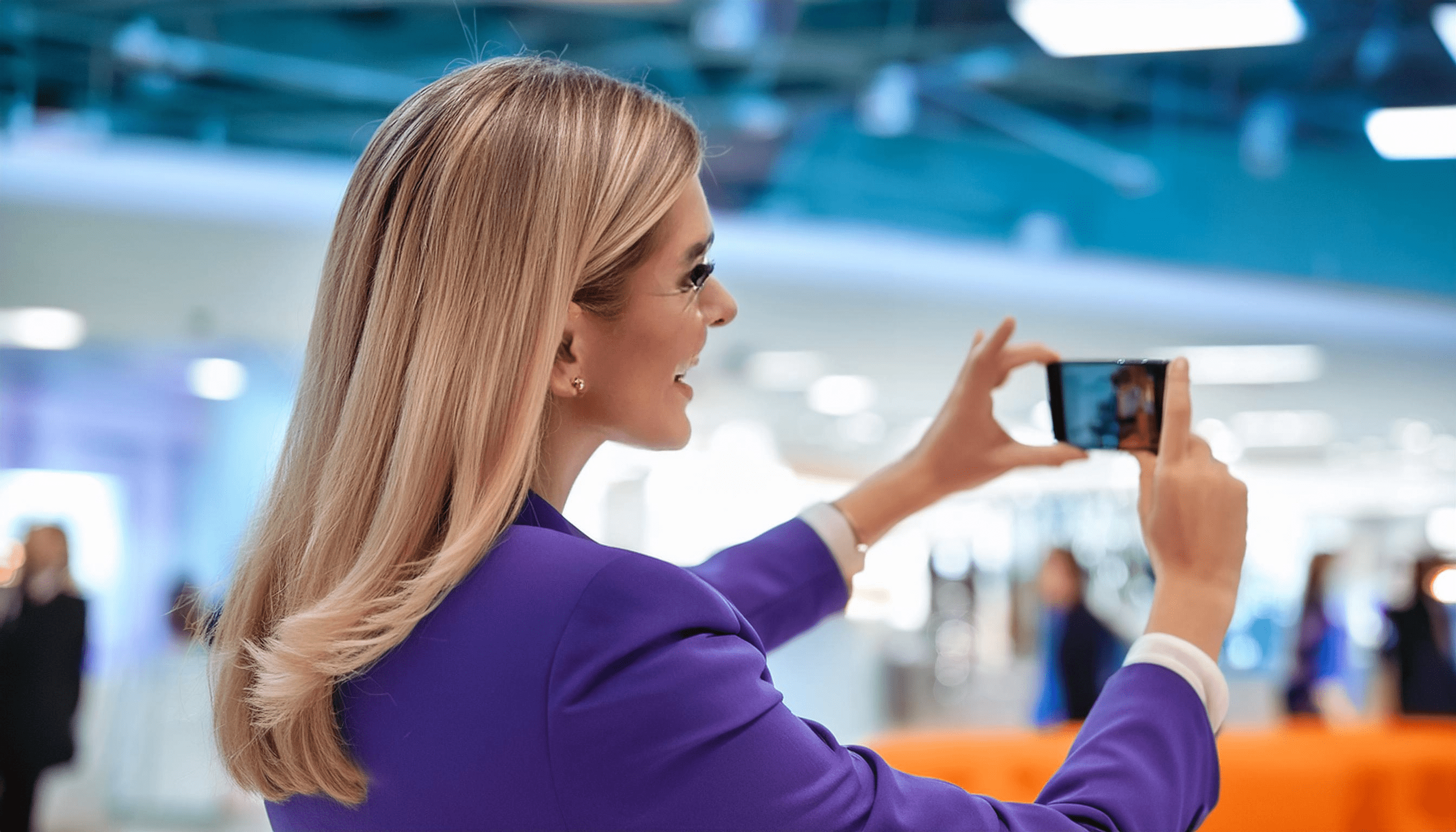In the dynamic landscape of event planning, the role of social media has become paramount in achieving success. With billions of users across various platforms, social media offers a unique and expansive space to promote and grow your event. This comprehensive guide aims to delve into the intricacies of leveraging social media effectively, providing you with a roadmap to enhance the visibility and impact of your event.
Online presence is a driving force, and strategic planning is crucial for navigating the vast opportunities that social media presents. From creating compelling content to utilizing advertising tools and engaging with your audience, each facet plays a pivotal role in the overall success of your event. We’re going to walk you through the process, offering insights, tips, and strategies to optimize your use of social media platforms.
As we embark on this journey, it is important to recognize the ever-evolving nature of social media. Platforms continually introduce new features, algorithms change, and user behaviors shift. Staying informed about these dynamics is key to staying ahead in the digital realm. So, buckle up as we explore the multifaceted ways in which you can harness the power of social media to not just promote but truly grow your event.
Understanding the Power of Social Media for Event Growth
Social media has undergone a remarkable transformation, evolving into a dynamic force that significantly influences the success of events. In this section, we’ll delve into the shifting landscape of social media platforms and examine the profound impact they have on the promotion and growth of events.
The Evolving Landscape of Social Media
The first step in harnessing social media for event growth is understanding the dynamic nature of the platforms themselves. Social media platforms, from the giants like Facebook and Instagram to newer players like TikTok, continually evolve. Features change, algorithms are updated, and user behaviors adapt. Staying abreast of these changes is crucial for adapting your event promotion strategy effectively.
The constant evolution of social media platforms also means new opportunities for event promotion emerge regularly. As a savvy event planner, being aware of these changes allows you to leverage emerging features and trends to your advantage. In this fast-paced environment, adaptability is key.
The Impact of Social Media on Event Promotion
The influence of social media on event promotion cannot be overstated. Traditional marketing methods are no longer sufficient in reaching a broad and engaged audience. Social media provides a global stage, allowing events of all scales to connect with attendees, sponsors, and partners in real time.
The viral nature of social media means that a well-executed event promotion strategy can lead to exponential reach. Word-of-mouth has been replaced by shares, retweets, and hashtags, amplifying the visibility of your event beyond traditional boundaries. In this interconnected digital age, events have the potential to become global phenomena through the strategic use of social media.
As we navigate the depths of using social media to grow your event, it’s essential to recognize the transformative power these platforms hold in reshaping how events are conceived, promoted, and experienced.
Crafting Your Social Media Event Strategy
Now that we’ve grasped the transformative power of social media, the next crucial step is crafting a comprehensive strategy tailored to your event’s goals and audience. In this section, we will explore the foundational elements of a successful social media event strategy, emphasizing the importance of setting clear goals and understanding your target audience.
Defining Your Event Goals
Every successful social media strategy begins with a clear set of objectives. Whether your goal is to increase event attendance, boost brand awareness, or generate leads, defining these goals upfront provides a roadmap for your entire social media campaign. The specificity of your objectives will guide the content you create and the metrics you track.
Understanding the nuances of each goal is vital. For instance, if your primary aim is to boost attendance, your strategy may involve creating engaging content, utilizing targeted advertising, and implementing promotions to incentivize registrations. On the other hand, if brand awareness is the focus, your approach might involve storytelling, brand-centric visuals, and collaborations with influencers.
Identifying Your Target Audience
Knowing your audience is the cornerstone of an effective social media event strategy. Conducting thorough audience analysis helps you tailor your content to resonate with the right people. Start by creating detailed audience personas, considering factors such as demographics, interests, and online behaviors.
By understanding your audience, you can choose the most relevant platforms for promotion, tailor your messaging to align with their preferences, and even schedule posts at times when they are most active. This targeted approach not only enhances the effectiveness of your social media efforts but also cultivates a sense of connection between your event and your audience.
Keep in mind that the success of your event is intricately linked to the clarity of your goals and the resonance of your messaging with your target audience. Join us in the next section as we explore the art of choosing the right social media platforms to maximize your event’s reach and impact.
Choosing the Right Social Media Platforms for Your Event
With clear goals and a deep understanding of your target audience, the next pivotal step in your social media event strategy is selecting the platforms that align best with your event type and audience preferences. In this section, we’ll explore the nuanced art of platform selection and the importance of optimizing your profiles for maximum impact.
Platform Selection Based on Event Type
Different social media platforms cater to diverse audiences and content formats. Understanding the unique strengths of each platform is crucial for tailoring your strategy to your event type. For instance, visual-centric platforms like Instagram and Pinterest are ideal for events with a strong visual appeal, while LinkedIn may be more suitable for professional or B2B events.
Consider the nature of your event, whether it’s a music festival, business conference, or product launch. Each event type has a natural home on specific platforms. By aligning your event with platforms that resonate with your audience, you maximize the potential for engagement and visibility.
Optimizing Profiles for Maximum Impact
Once you’ve selected the platforms that best suit your event, the next step is to optimize your profiles. Consistent branding across platforms builds a cohesive and recognizable identity for your event. Ensure your profile pictures, banners, and bios reflect the essence of your event and are consistent across all chosen platforms.
Take advantage of platform-specific features. Utilize Instagram Stories for behind-the-scenes glimpses, leverage Twitter for real-time updates, and explore the interactive elements on platforms like Facebook and TikTok. Tailoring your content to the strengths of each platform enhances your overall social media presence.
The careful selection and optimization of social media platforms lay the foundation for a successful campaign. As we move to the next section, we’ll delve into the creation of engaging content that captivates your audience and amplifies your event’s message.
Creating Engaging Content for Event Promotion
Having established a solid foundation with clear goals and selected the right social media platforms, the next pivotal aspect of your strategy revolves around crafting compelling content that captivates your audience. In this section, we’ll explore the power of visual content strategies, the art of crafting compelling captions, and the importance of maintaining a consistent tone across your posts.
Visual Content Strategies
Visual content is the heartbeat of successful event promotion on social media. The human brain processes visuals faster than text, making images and videos powerful tools for conveying your event’s message. Invest time in creating high-quality visuals that not only showcase the essence of your event but also resonate with your audience.
Consider utilizing a mix of content types, from eye-catching graphics and infographics to immersive videos and live streams. Visual variety keeps your audience engaged and excited about your event. Additionally, user-generated content, such as attendee photos and testimonials, adds authenticity and builds a sense of community around your event.
Crafting Compelling Captions and Copy
While visuals grab attention, compelling captions and copy provide context and storytelling elements. Your captions should be concise, yet impactful, conveying the key message of your event. Use language that resonates with your audience and prompts them to act, whether it’s liking, sharing, or registering for your event.
Maintaining a consistent tone across your captions and copy is essential for building brand identity. Whether your tone is casual, professional, or humorous, it should align with your event’s overall vibe. Consistency creates familiarity and helps your audience connect with your event on a deeper level.
Remember that each piece of content should contribute to the narrative of your event. Next, we explore the strategic use of social media advertising to further boost awareness and reach for your upcoming event.
Utilizing Social Media Advertising to Boost Event Awareness
In the quest to maximize your event’s visibility and impact, leveraging the targeted capabilities of social media advertising is a strategic move. This section will guide you through the fundamentals of social media advertising, from understanding its role in event promotion to creating effective ads that resonate with your audience.
Introduction to Social Media Advertising
Social media advertising acts as a powerful amplifier for your event promotion efforts. Unlike organic reach, which relies on your existing audience, paid advertising enables you to reach new and highly targeted audiences. Platforms like Facebook, Instagram, and LinkedIn offer a range of advertising options, from sponsored posts to carousel ads and video promotions.
Before diving into advertising, it’s crucial to define your budget, objectives, and target audience. Whether you’re aiming to drive ticket sales, increase event awareness, or promote specific features, a well-defined strategy ensures your advertising efforts align with your overall goals.
Creating Effective Social Media Ads
Designing compelling and effective ads requires a blend of creativity and strategic thinking. Visual elements should be attention-grabbing and align with your event’s theme and branding. Consider using high-quality images, videos, or graphics that tell a story and evoke emotion.
Craft clear and concise ad copy that communicates the value of your event. Highlight key details such as date, location, and unique selling points. Incorporate a call-to-action (CTA) that directs users to take the desired next step, whether it’s visiting your event website, registering, or sharing the ad with their network.
Additionally, take advantage of the targeting features offered by social media platforms. Tailor your ads to specific demographics, interests, and behaviors to ensure they reach the most relevant audience. Keep in mind that a well-executed ad campaign has the potential to significantly amplify your event’s reach.
Harnessing the Power of Hashtags and Trending Topics
As we continue to unravel the intricacies of using social media to grow your event, this section explores the strategic use of hashtags and tapping into trending topics. Understanding how to harness the power of these elements can elevate your event’s visibility and engagement across various platforms.
Strategic Use of Hashtags
Hashtags are more than just trendy symbols; they serve as powerful tools for organizing and categorizing content on social media. When strategically employed, hashtags can significantly boost your event’s discoverability. Create a unique and memorable event hashtag that attendees can use in their posts, fostering a sense of community and making it easier to track user-generated content.
In addition to your event-specific hashtag, incorporate relevant industry or niche hashtags to expand your reach. Research popular and trending hashtags within your event’s domain and integrate them thoughtfully into your posts. This can expose your content to broader audiences interested in related topics.
Leveraging Trending Topics
Tapping into trending topics is a dynamic way to align your event with current conversations and increase its online visibility. Monitor trending topics on different platforms and identify those that resonate with your event’s theme or purpose. Craft content that seamlessly integrates these trending elements while maintaining relevance to your event.
However, exercise caution to ensure that the connection between your event and the trending topic is authentic and meaningful. Inappropriately piggybacking on trends can be perceived as disingenuous. Choose topics that align with your event’s values and messaging, enhancing rather than diluting your brand.
As we explore the strategic use of hashtags and trending topics, remember that these elements can propel your event into the social media spotlight, connecting it with a broader and more engaged audience. Join us in the next section, where we delve into community-building strategies and interactive campaigns to foster a sense of belonging among your event attendees.
Building and Engaging Your Social Media Community
In the realm of event promotion through social media, building a vibrant and engaged community is not just beneficial—it’s essential. This section will guide you through effective community-building strategies and explore interactive campaigns and contests that foster a sense of belonging among your audience.
Community Building Strategies
Building a community around your event involves more than just amassing followers. It’s about creating a space where individuals feel connected, valued, and enthusiastic about your event. Start by consistently sharing valuable content that resonates with your audience. This could include behind-the-scenes glimpses, sneak peeks, and exclusive announcements.
Encourage audience interaction by posing questions, conducting polls, and actively responding to comments and messages. Acknowledge your community’s contributions, whether it’s user-generated content or insightful comments. By creating a two-way dialogue, you foster a sense of community ownership and engagement.
Consider establishing dedicated groups or forums on platforms like Facebook, where attendees can connect, share their excitement, and discuss related topics. Hosting virtual meetups or Q&A sessions further strengthens the sense of community, allowing participants to interact with both organizers and fellow attendees.
Interactive Campaigns and Contests
Interactive campaigns and contests are powerful tools to not only engage your existing audience but also attract new participants. Tailor your campaigns to align with your event’s theme and goals. For example, a photo contest where participants share their event preparations, or a caption contest related to your event can generate buzz and participation.
Utilize social media features such as polls, quizzes, and challenges to encourage participation. Create a branded hashtag for your campaign to track entries and amplify their visibility. Consider collaborating with influencers or partners to extend the reach of your campaign to their followers.
Remember, the goal is not just participation but creating memorable and shareable experiences that contribute to the overall narrative of your event. Join us in the next section as we explore the vital aspect of measuring success through analytics and key performance indicators (KPIs). Understanding how to interpret social media analytics is crucial for making data-driven adjustments to your strategy.
Measuring Success: Analytics and Key Performance Indicators (KPIs)
As your social media event strategy unfolds, it’s imperative to have a robust system in place for measuring success. This section delves into the importance of defining relevant metrics and understanding social media analytics. By establishing key performance indicators (KPIs) and interpreting the data they yield, you can make informed decisions to enhance your event’s reach and impact.
Defining Relevant Metrics for Your Event
Before delving into analytics, it’s crucial to identify the metrics that align with your event goals. Different events may prioritize different metrics based on their objectives. Common metrics include:
- Engagement Rate: Measure likes, comments, shares, and overall interaction with your content.
- Reach and Impressions: Assess how many people have seen your content and how frequently.
- Click-Through Rate (CTR): Evaluate the effectiveness of your call-to-action by measuring clicks.
- Conversion Rate: Track the percentage of users who took a desired action, such as registering for the event.
- Audience Growth: Monitor the increase in your social media following.
Interpreting Social Media Analytics
Most social media platforms provide in-depth analytics tools that offer valuable insights into user behavior and content performance. Regularly review these analytics to gauge the effectiveness of your strategy. Look for patterns, trends, and areas for improvement.
For example, if engagement is a key metric, analyze which types of content receive the most interactions. If your goal is audience growth, track the effectiveness of different acquisition channels. By understanding the nuances of social media analytics, you can refine your approach and focus on tactics that yield the best results.
Utilize A/B testing to experiment with different content formats, posting times, and messaging approaches. This iterative process allows you to optimize your strategy based on real-time data and audience feedback.
In the world of analytics, remember that the true power lies not just in gathering data but in deriving actionable insights to enhance your event promotion efforts.
Adapting Your Strategy: Real-time Engagement and Crisis Management
In the ever-evolving landscape of social media, real-time engagement and adept crisis management are indispensable elements of a successful event strategy. This section explores the significance of timely responses, interactive tactics, and preparedness for managing social media crises.
Real-time Engagement Tactics
The immediacy of social media requires a proactive and responsive approach to engagement. Respond promptly to comments, messages, and mentions. Acknowledge positive interactions and address concerns or queries swiftly. Real-time engagement not only fosters a sense of connection but also showcases your event’s commitment to attendee satisfaction.
Leverage live features on platforms like Instagram and Facebook to provide real-time updates, behind-the-scenes content, and interactive sessions. Live engagement creates a sense of urgency and exclusivity, encouraging followers to actively participate and share the experience.
Consider scheduling posts during peak activity times when your audience is most active. This ensures your content appears in their feeds when they are most likely to engage. Monitoring trending topics in real time also enables you to join relevant conversations and capitalize on the latest trends.
Preparing for and Managing Social Media Crises
While social media presents vast opportunities, it also comes with the potential for crises. Be prepared for unforeseen challenges by establishing a crisis management plan. Anticipate possible issues and outline step-by-step procedures for addressing them.
Transparency is key during crises. Communicate openly with your audience, addressing concerns and providing updates. Have designated spokespersons or community managers trained to handle crisis communication effectively. Social media users appreciate honesty, and a well-managed crisis can even enhance your event’s reputation.
Regularly monitor mentions and sentiment around your event. Early detection allows you to address issues before they escalate. Use social listening tools to track brand mentions, hashtags, and relevant keywords, gaining insights into public perception and sentiment. Don’t forget that agility and preparedness are essential for maintaining a positive online presence for your event.
Conclusion
As we bring this comprehensive guide to a close, it’s essential to recap the key strategies for using social media to grow your event successfully. From understanding the evolving landscape of social media to crafting a tailored strategy, choosing the right platforms, and creating engaging content, each step plays a crucial role in amplifying your event’s reach and impact.
In conclusion, the power of social media in growing your event lies not only in the individual components but in their seamless integration. Ongoing adaptability and innovation are the linchpins of a successful social media strategy. As platforms evolve and user behaviors shift, staying ahead of the curve ensures your event remains at the forefront of your audience’s attention.
So, as you embark on your social media journey to grow your event, remember that each post, engagement, and strategic decision contributes to the narrative of your event’s success. Stay innovative, stay engaged, and watch your event flourish in the dynamic world of social media.














